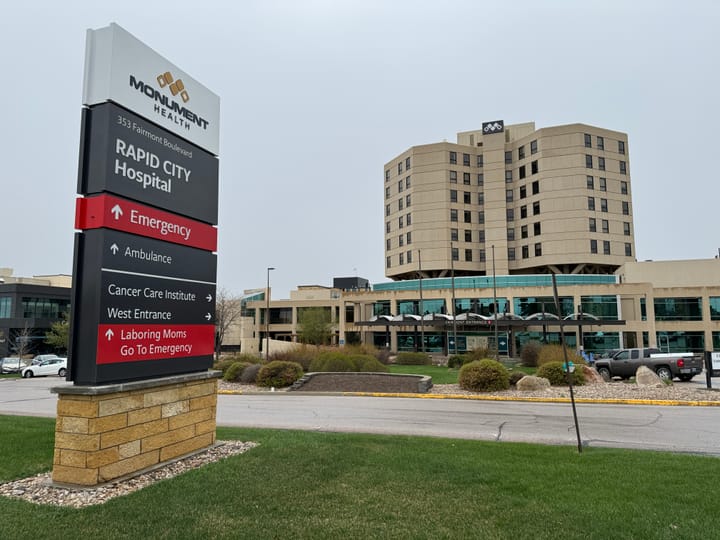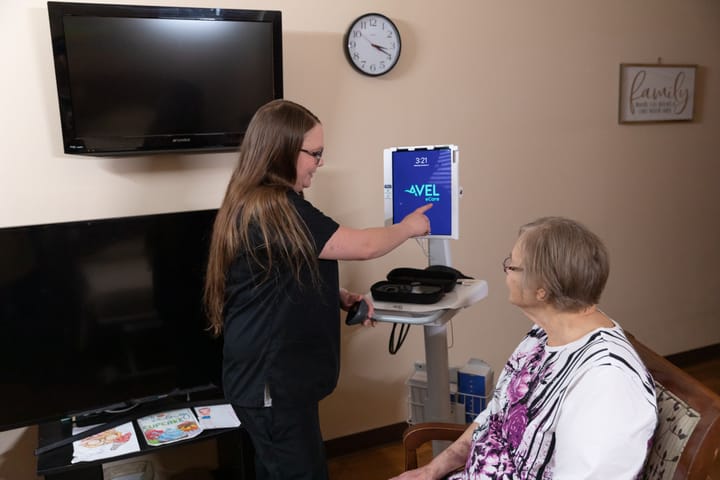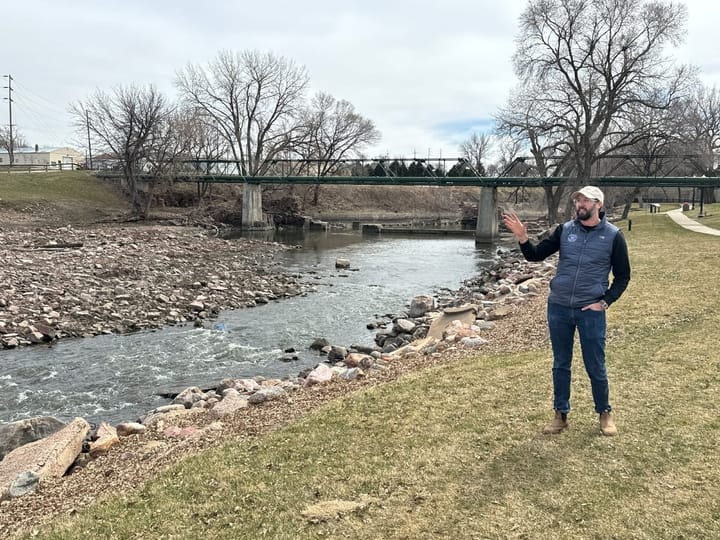Processing wild game can be trickier than bagging it in South Dakota
A shortage of butchers and meat cutters is creating a crippling workload and making hunters scramble to find a place to process their deer.
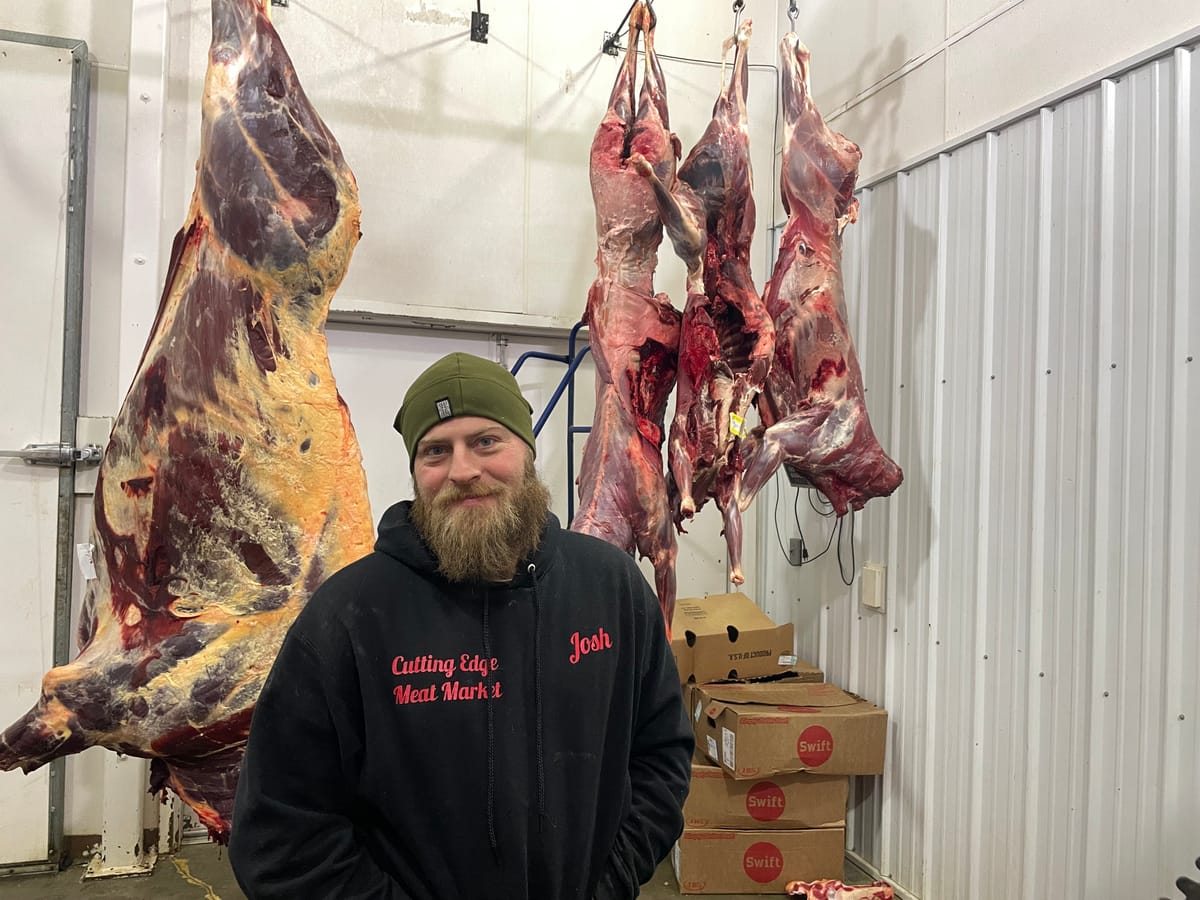
PIEDMONT, S.D. – A sudden shortage of South Dakota butchers and meat cutters willing to process wild game has been bad news for hunters but good news for Josh Clark and the small butcher shop he manages in Piedmont.
On a recent November day, Clark walked through the work area of Cutting Edge Meat Market, one of the few butcher shops in the Rapid City area that still processes whole deer carcasses, and the three employees using knives to cut up venison never looked up from their work.
The workers were too busy to notice Clark ushering a guest through the cutting room and back to a pair of walk-in coolers where dozens of skinned deer killed by South Dakota hunters hung on large hooks.
The month of November – the heart of the deer hunting season in South Dakota – is always busy for butchers who process wild game, as hunters bring in tens of thousands of deer and antelope shot with rifles or bow and arrow. This year, the small butcher shop 10 miles west of Rapid City is swamped, with far more hunters than usual calling with inquiries or just showing up with deer on their vehicles.
"The last few days, it’s been crazy nonstop with call after call and people dragging them in," Clark said. "We’re packed wall to wall, and we’re trying to get them cut and out the door as fast as they’re coming in, but there's just so many coming in."
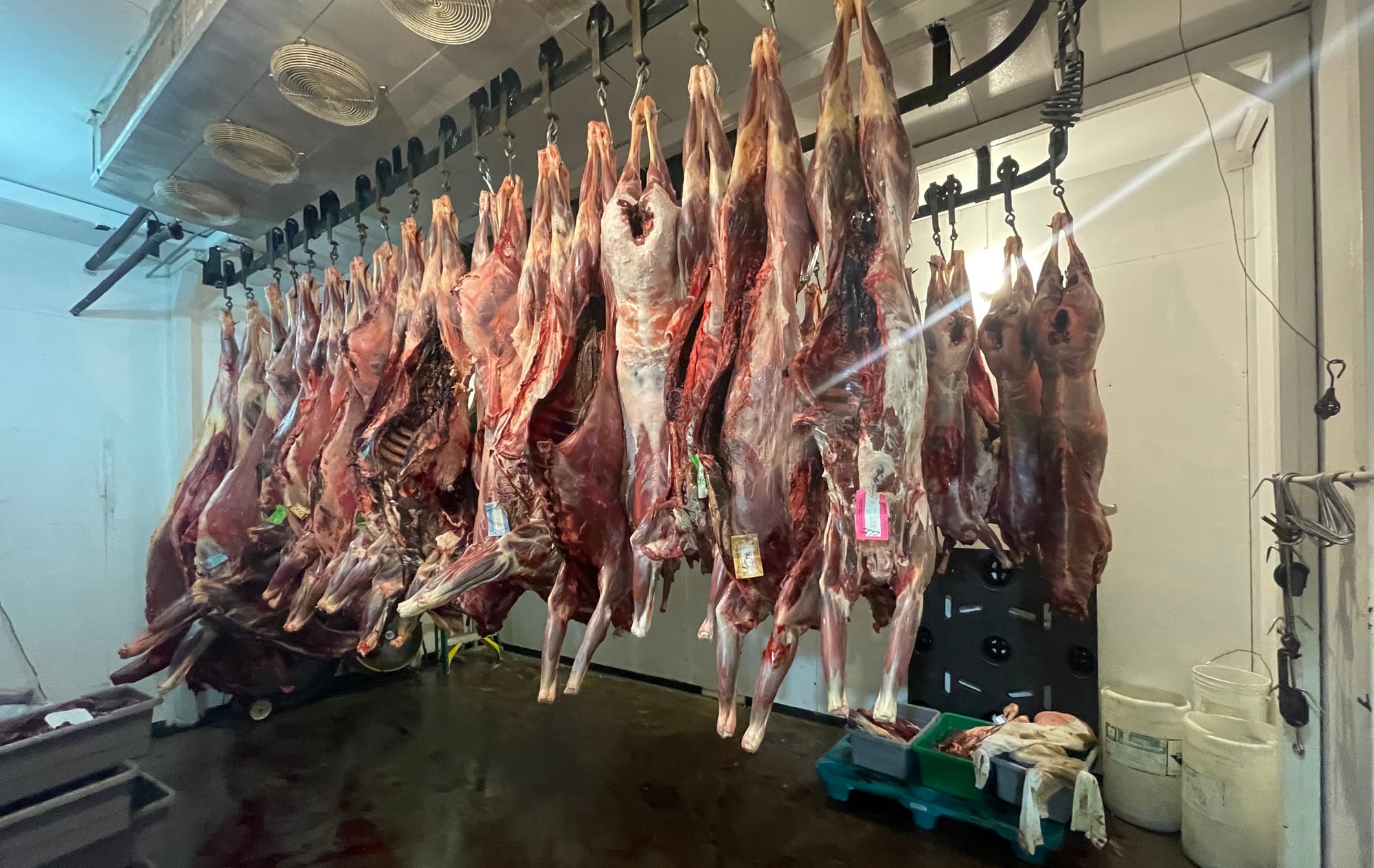
South Dakota butchers exiting wild game market
Some butcher shops have closed or shifted focus, while others no longer take any wild game, and a few will only process wild meat that is already skinned and deboned by the customer. The difficulty in finding butchers to process wild game is part of a larger trend in which South Dakota livestock producers also are unable to find local processing options and must ship cattle, sheep and hogs out of state for slaughter, cutting and packaging, as recently reported by News Watch.
Butchers who still take full deer carcasses say other processors who no longer take wild game or require it to be deboned first may be facing worker shortages, have higher expenses that cut into profitability, or simply do not want the hassle of dealing with wild game processing that often occurs one customer with one animal at a time.
Whereas commercial livestock producers schedule delivery of animals to be slaughtered and butchered during normal work hours and with several animals at once, big game hunters usually arrive at butcher shops with one or two animals at whatever time of day they happen to make a kill.
"The way I see it, it’s just a dying industry," Clark said. "A lot of other meat plants are sticking to custom cutting of buffalo and beef, and they don’t want to deal with the hassle and rat race of of handling wild game."
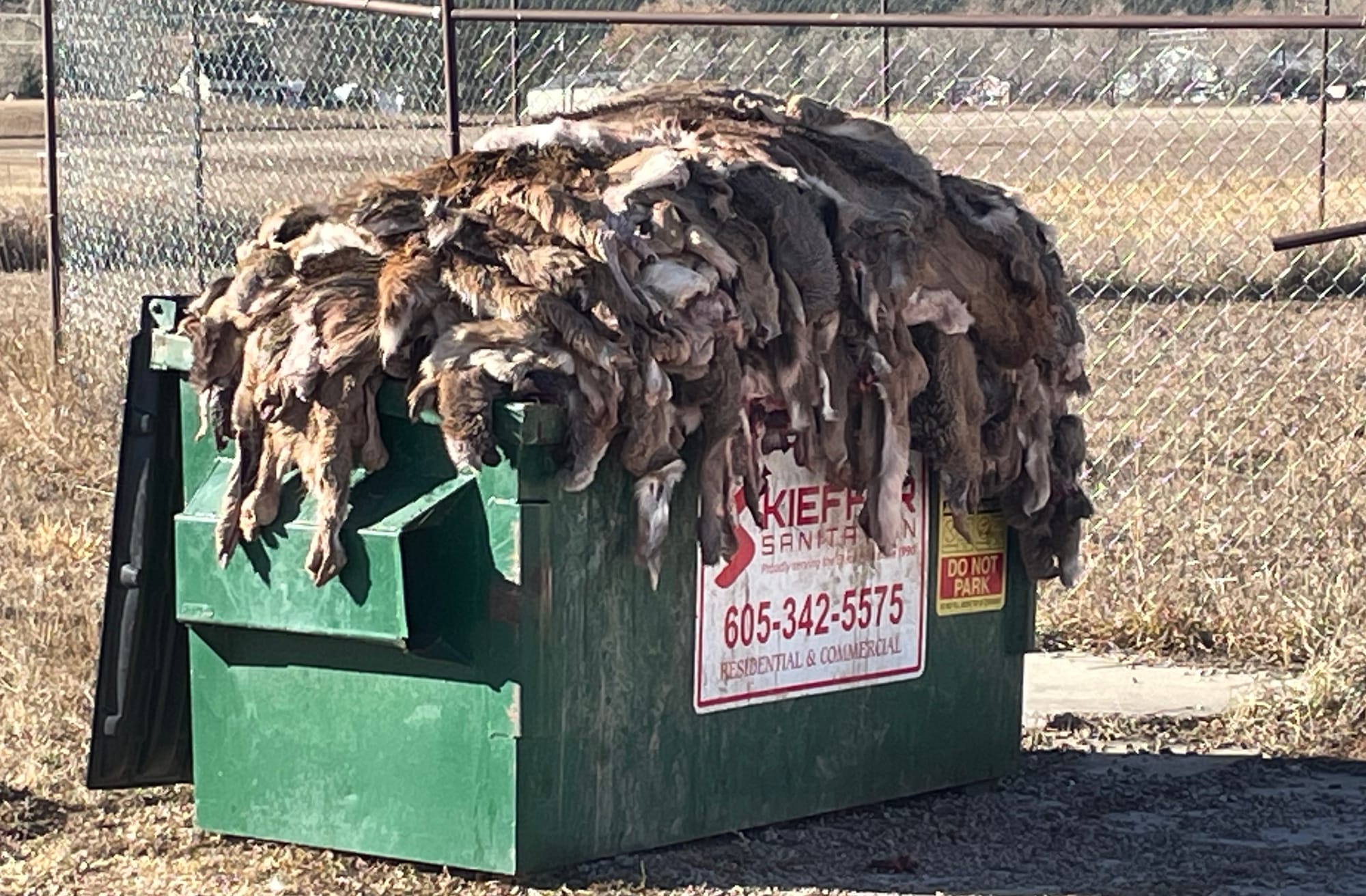
'A lot harder for hunters' to process deer
The drop in processors of wild game has made it difficult for hunters – who killed about 55,000 deer and 3,000 antelope in South Dakota in 2022 – to get their animals processed and packaged. One concern is that if hunters who lack the skills or equipment to skin, quarter and debone carcasses on their own can't find a processor willing to take a whole carcass, the animals could be dumped in the garbage or left to rot in the field. Some hunters may choose to give up hunting if they know in advance they won't be able to get a full animal carcass processed.
Paul Sorum, co-owner of Renner Corner Meats just north of Sioux Falls in Renner, said he has seen higher demand for wild game processing services this year compared to others — including from hunters in nearby Minnesota — and that some hunters are growing concerned at the declining options. Renner Corner Meats is one of the few butcher shops that still takes entire carcasses for processing in the East River region.
“When there are fewer and fewer meat processing plants like ours that are accepting full carcasses, it’s getting a lot harder for hunters to find a place to go with that deer,” Sorum said. “I think it would be a big problem for hunters if we ended up having to shut that part of the business down.”
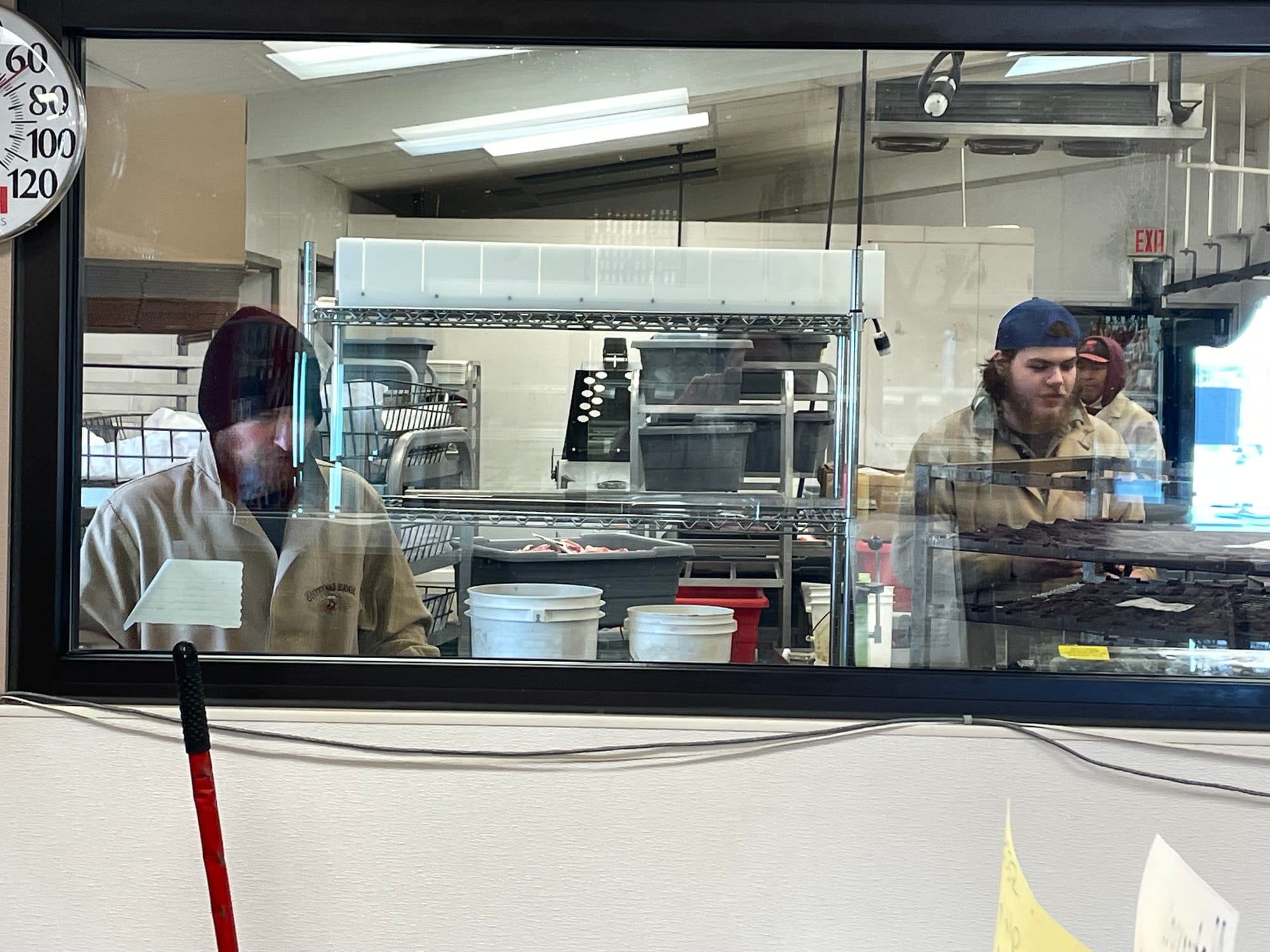
Deer carcass processing can cost up to $175
The processing of a deer carcass typically costs from $100 to $175 and includes skinning, quartering, deboning and packaging of venison into convenient 1 to 3 pound packages. Deer and antelope are typically cut into roasts and steaks for grilling or panfrying and into ground meat for use in soups, stews, burgers or tacos.
Venison is a lean meat that is similar to beef but with a slightly earthier or gamier flavor. Hunters can also have venison made into jerky or sausage, brats and meat sticks that sometimes include pork, which typically costs extra.
Hunters who want to donate the meat from a deer or antelope to charitable food pantries across the state can work with South Dakota Sportsmen Against Hunger. Under the program, hunters with animals can contact one of roughly two dozen butchers in South Dakota and drop off an animal carcass or deboned meat for full processing. In most cases, the participating butcher shops assume the cost of processing female animals, while donating a buck typically results in the hunter paying the processing fee.
Some of the butchers enrolled in the program require that the animal be skinned and deboned before being dropped off for processing, and the program does nothing to help hunters who want to eat the wild game meat from animals they have killed.
The wild game processing industry is not overseen or regulated by the state Game, Fish & Parks Department, which manages state hunting seasons, though butcher shops are subject to regular inspection by state and federal regulators. GFP spokesman Nick Harrington sent an email response to questions from News Watch that included the following:
"GFP is currently not seeing a lack of game processors acting as a barrier to hunters participating in the sport. Conversely, applications for many big game seasons including deer and elk are either holding steady or gradually rising each year. There are some big game hunters who utilize processors, while others process themselves. This is each individual hunter’s choice and personal preference. Additionally, GFP does have educational programs such as Hunting 101 that educate new hunters on all aspects of hunting-from scouting and hunting, to ultimately processing of the animal. "
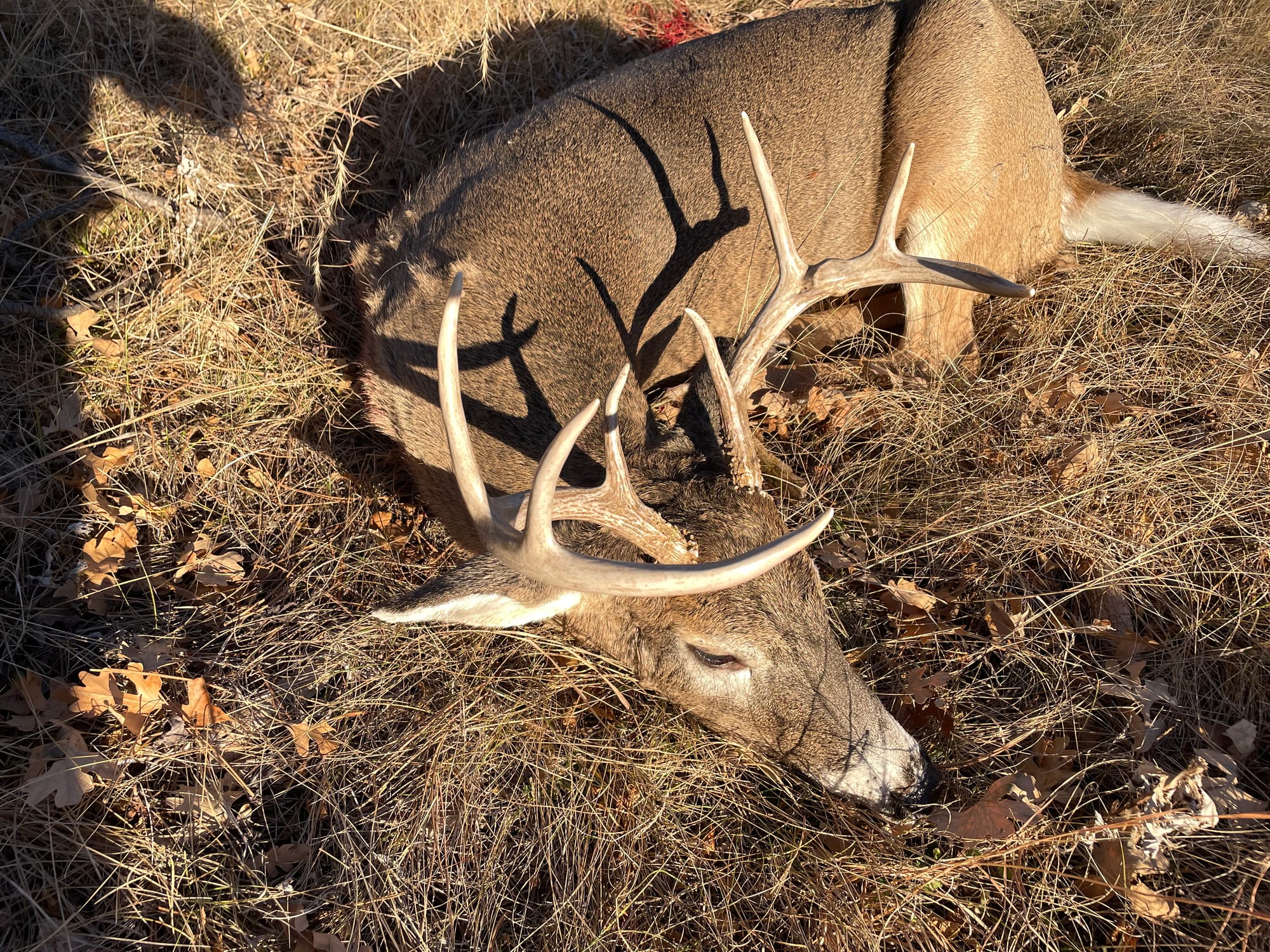
Home-based butchers help fill the need in South Dakota
The commercial butcher shops that handle wild game have long been bolstered by a network of small, home-based meat processors who take animals killed in the fall. However, those processors are also dropping out of the industry or slowing down due to age, increasing volumes or burnout.
One home-based butcher near Rapid City said 2023 will likely be his last year of processing deer for hunters. The man said he is tired of the hassle of taking constant phone calls (100 of them in November) and having deer dropped off at his home unannounced as late as 10 p.m.
The man, who has processed and packaged deer for friends and relatives for decades, refused to have his name published because he is already annoyed by the number of contacts from strangers wanting their deer butchered. One hunter, he said, once dropped off a deer without warning, then entered his home without permission to leave a note on his kitchen table.
But some home-based butchers continue to provide the service of processing wild game from carcass to usable meat portions wrapped in butcher paper, though they often can only be found through word-of-mouth connections.
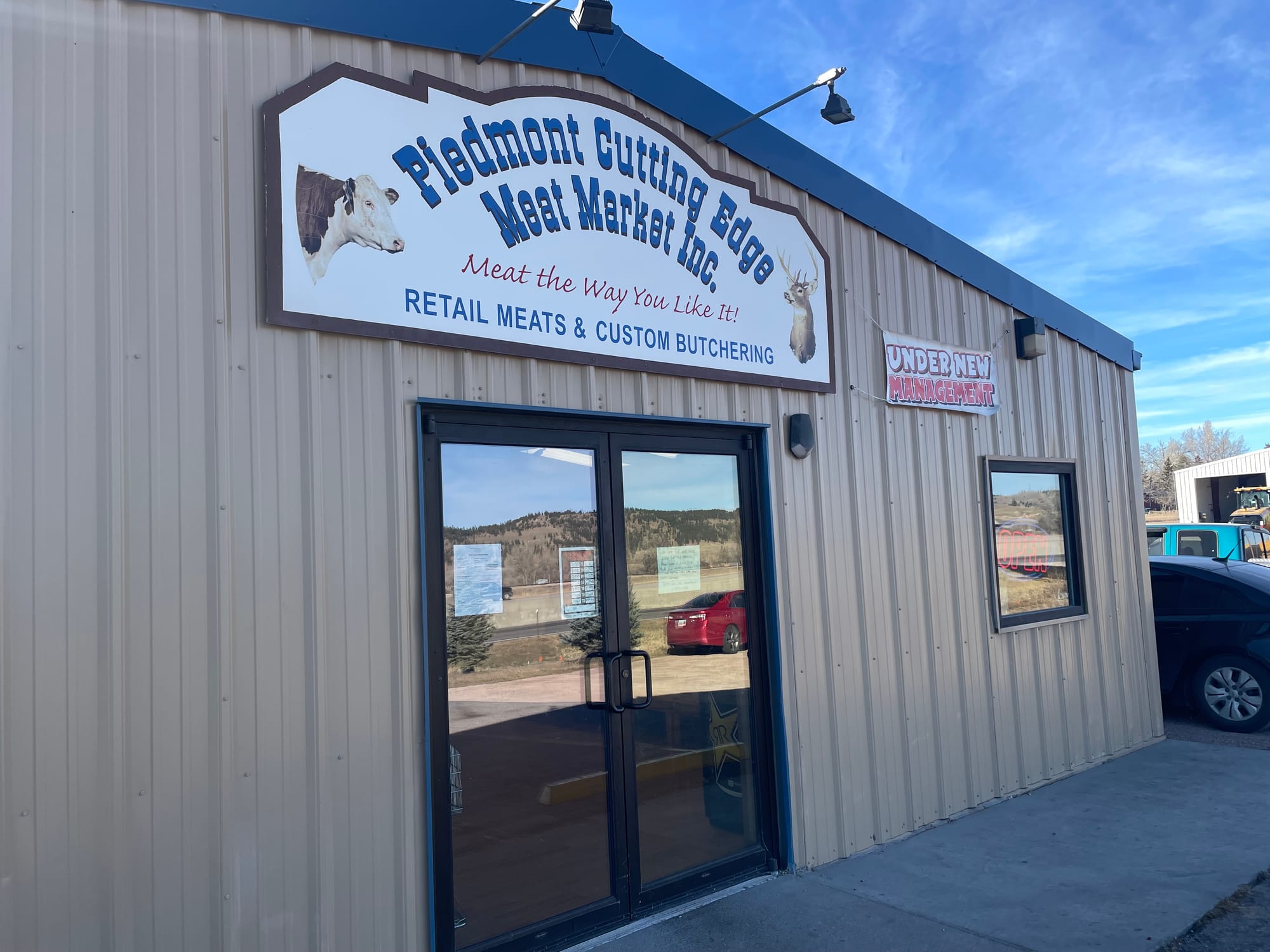
Meat processors 'overflowing' with wild game
Rex Roseland and his wife, Cheryl, have processed wild game at their home north of Rapid City for decades, but this year feels different in the need for their services, he said.
“When you get swamped, it just takes time to get caught up,” Rex Roseland said. “We get a lot of people from previous years, and they keep coming back. But every year it seems like we pick up more people.”
Cheryl Roseland said the couple works as a team to get dozens of deer processed annually, with him as the knife man and her engaged more in the meat-grinding and packaging side of the business. They have a cooler and freezer as well as a meat cutting station on their rural property where they charge a $115 per animal processing fee, which an accountant told them they should raise to remain competitive amid high demand.
The couple may increase their capacity to butcher animals now that Rex Roseland has retired from his job as a salesman, and they are considering adding a new outbuilding to help.
Cheryl Roseland said they enjoy the work and want to help hunters out, but it’s getting harder to handle the increasing flow of animals being brought in.
“We’ve heard from people who are saying, ‘Help because we can’t find anyplace that will take it,’” she said. “But the thing is, while we can do it, do we have room to add another animal? We will take overflow when we can, but we’re overflowing ourselves out here.”
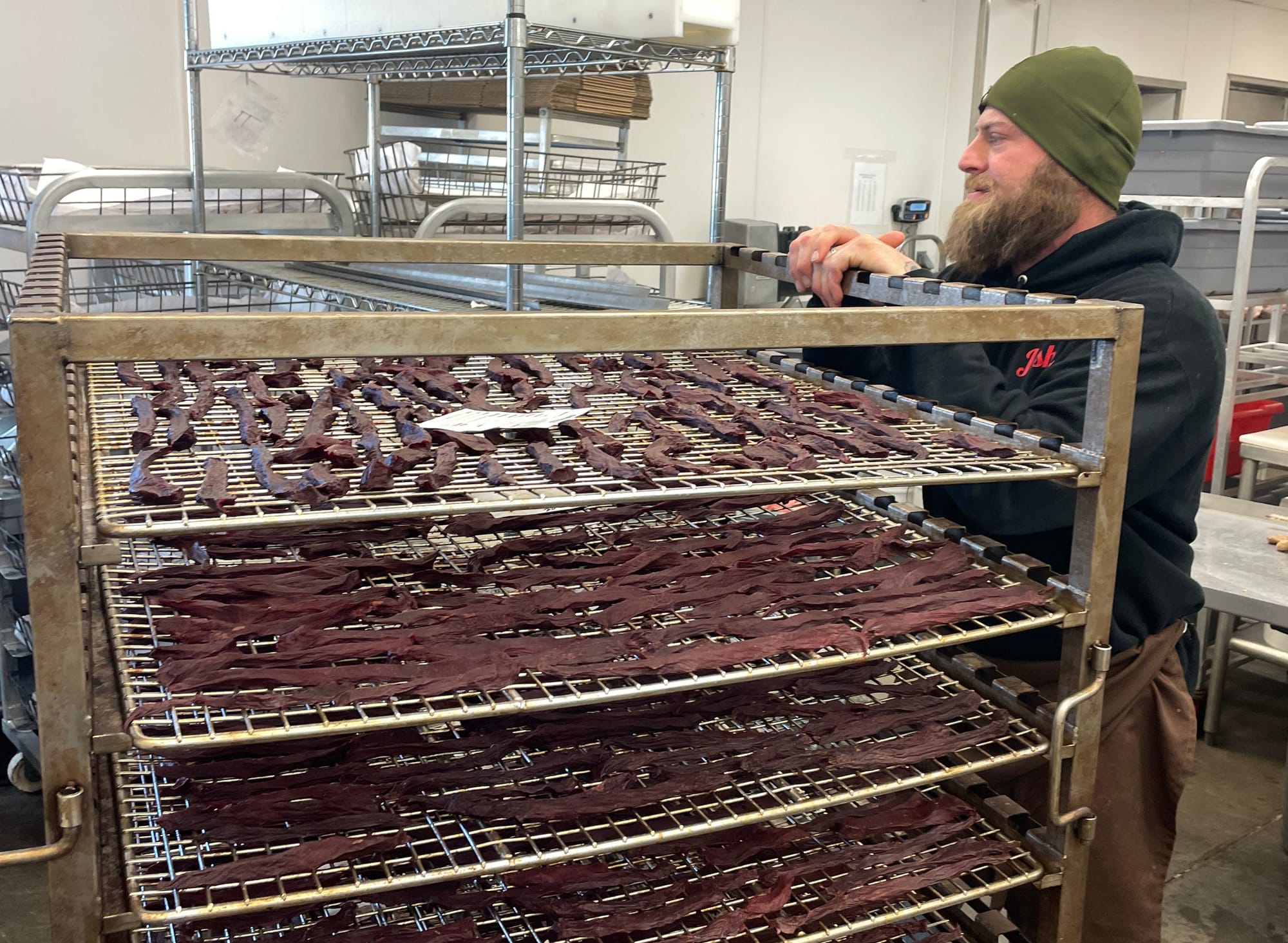
Fewer options for meat processing in eastern South Dakota
Hunters in the greater Sioux Falls area lost one option to process whole deer carcasses when Lee’s Meats and Sausages of Tea stopped processing carcasses and began taking only deboned wild game meat for processing, at least for this year.
But one venerable option remains for East River hunters, as Renner Corner Meats, located about 10 miles north of Sioux Falls, continued to take full deer, antelope and elk carcasses for processing this season, according to Sorum, a co-owner of the business.
“We’re one of the only ones around that are taking the full carcass deer right now, and I’m not sure how much longer we’re going to do whole carcasses,” Sorum said.
Sorum is aware that other processors have stopped taking in full deer and antelope because it can strain a meat-cutting business. “The consensus is that it could be a lack of employees, or they’re too busy with beef and hogs and aren’t interested in wild game anymore. Plus, it’s difficult work,” he said.
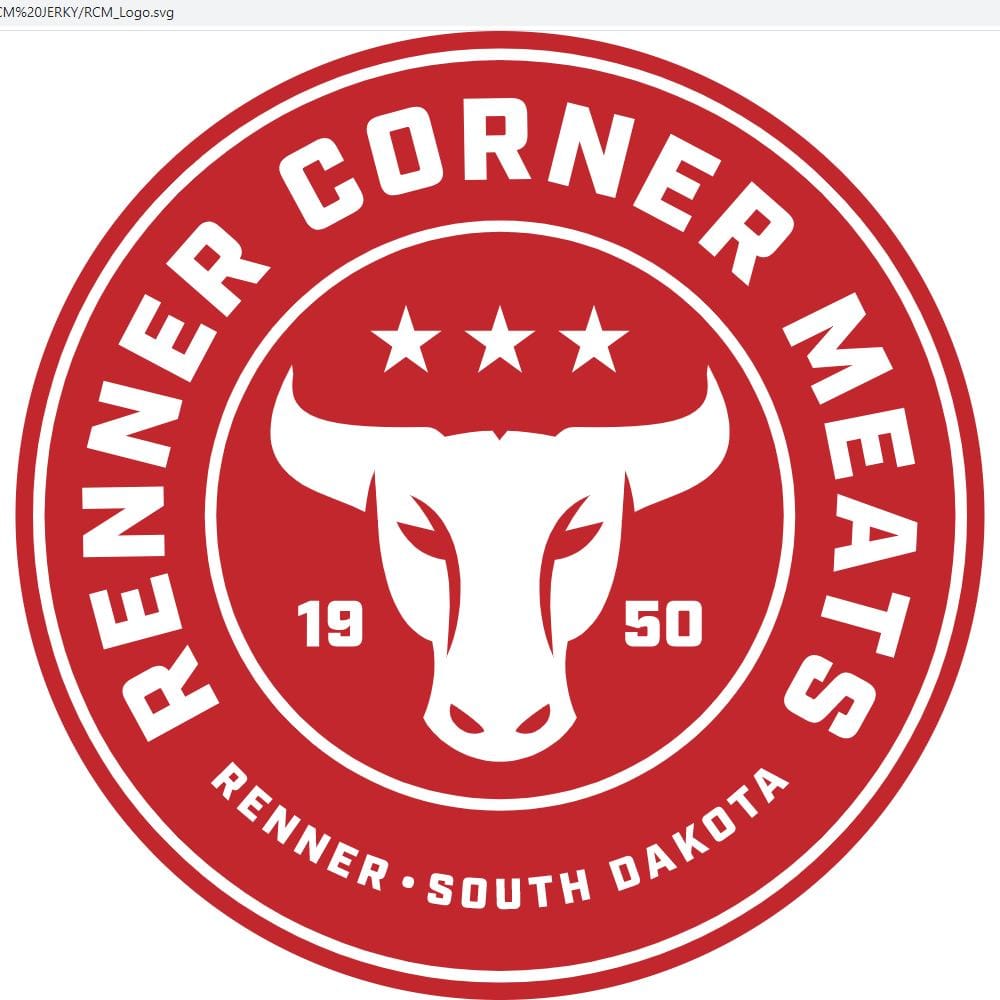
Sorum said Renner meats continues to take full carcasses as a service to its customers who hunt and who have come to rely on the quality meats produced by the business.
“We love doing it because it’s providing a service to the hunters of South Dakota and the people that come from out of state,” he said. “We have awesome products, and we love providing that customer service.”
Meat can take up to three months to process
Due to high demand, Sorum said he is telling hunters with a deer or antelope carcass that it could be until late February before they get their processed meat from an animal dropped off in November.
Sorum said Renner meats undergoes a fairly involved process in order to continue processing wild game carcasses for hunters.
Upon arrival, deer carcasses are hung in one of four semitrailers that serve as freezers outside the business. Renner meats can hold about 850 deer in those trailers, which were full on Nov. 25, prompting the business to announce on Facebook that it was no longer taking full deer carcasses for processing.
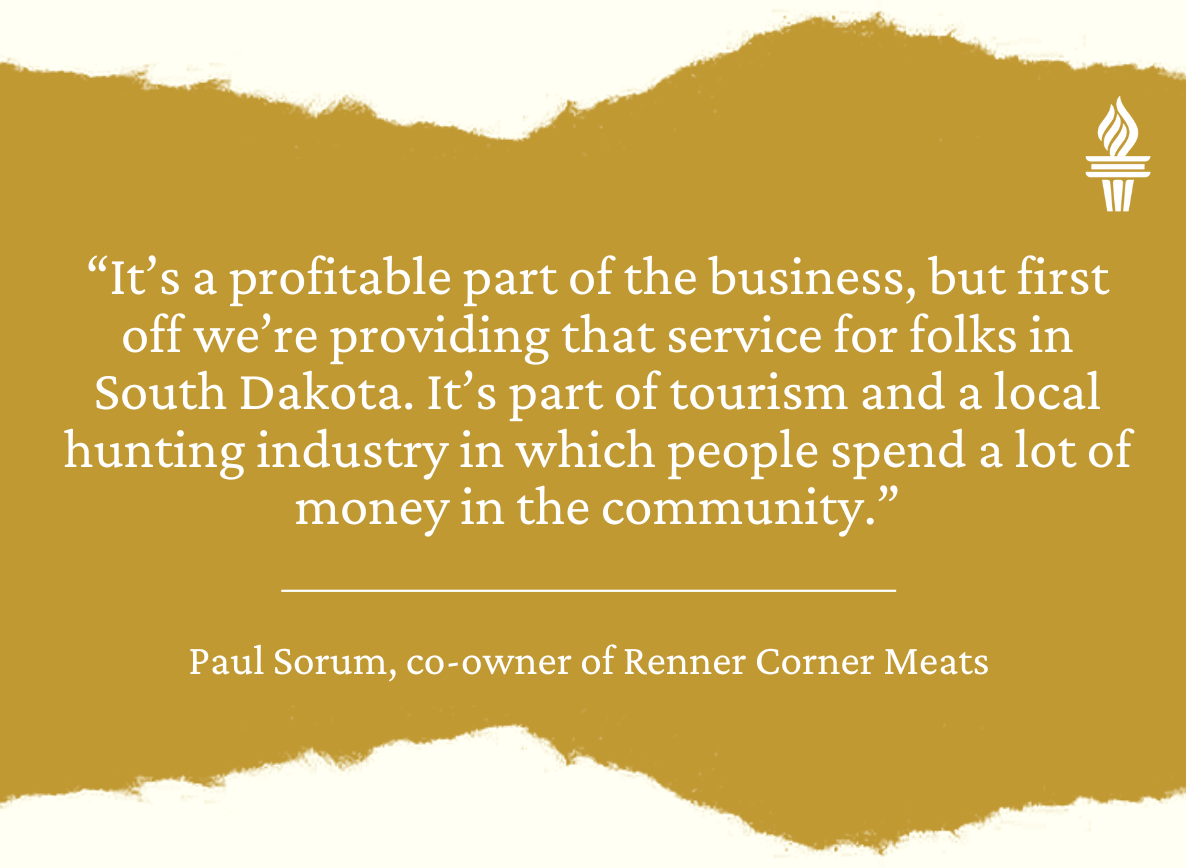
As time and scheduling permits, employees remove 40 or so deer at a time from the freezers and begin to thaw them in a holding room. The carcasses are then cut, processed and packaged, Sorum said. By law, the entire cutting room must be power-washed and sanitized anytime meat cutters switch from processing wild game for individuals to processing livestock for consumers, he said.
Processing wild game remains profitable, but the overriding reason the business still handles deer and other wild game is to provide an increasingly hard-to-come-by service to hunters and the state and local economy, Sorum said.
“It’s a profitable part of the business, but first off we’re providing that service for folks in South Dakota,” he said. “It’s part of tourism and a local hunting industry in which people spend a lot of money in the community.”

